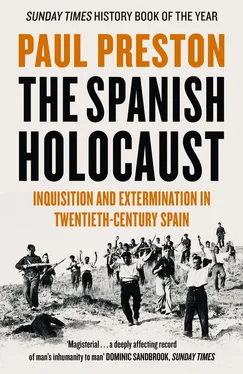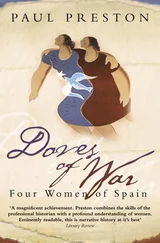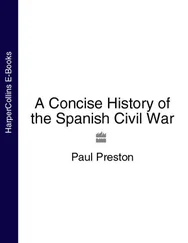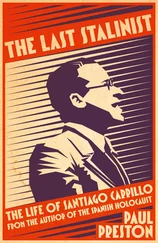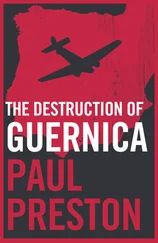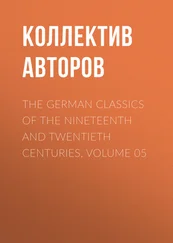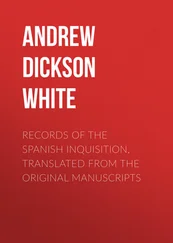For Gil Robles and Salazar Alonso, the adventurism of the Falange was an irrelevance. The Socialists’ empty revolutionary threat had played neatly into their hands. Their readiness to take advantage of that rhetoric to alter the balance of power in favour of the right had been illustrated brutally during the printers’ and landworkers’ strikes. Gil Robles knew that the leadership of the Socialist movement, dominated by followers of Largo Caballero, had linked its threats of revolution specifically to the entry of the CEDA into the cabinet. He also knew that, thanks to Salazar Alonso, the left was in no position to succeed in a revolutionary attempt. Constant police activity throughout the summer dismantled most of the uncoordinated preparations made by the revolutionary committee and seized most of the weapons that the left had managed to acquire. Gil Robles admitted later that he was keen to enter the government because of, rather than in spite of, the reaction that could be expected from the Socialists: ‘Sooner or later, we would have to face a revolutionary coup. It would always be preferable to face it from a position of power before the enemy were better prepared.’ 68
A linked element of Gil Robles’s strategy in the late summer of 1934 was the expansion of the militia of the Juventud de Acción Popular under the banner of ‘civilian mobilization’. Essentially, with the forthcoming revolutionary showdown in mind, its purpose was strike-breaking and the guaranteeing of essential public services. 69The man he chose to organize the ‘civilian mobilization’ and to train the paramilitary units was Lisardo Doval, the Civil Guard officer expelled from the service for his part in the Sanjurjo coup attempt of August 1932. 70
During the summer of 1934, political tension was heightened by a conflict over Catalonia which was skilfully manipulated by Gil Robles in such a way as to provoke the left. The right deeply resented the Republic’s granting of regional autonomy to Catalonia in 1932. This was reflected in the decision of the Tribunal of Constitutional Guarantees on 8 June to overrule a measure by the Catalan parliament to lengthen leases for smallholders. This delighted big landowners in Catalonia and elsewhere. Presenting the law unchanged to the parliament on 12 June, the President of the Generalitat (the Catalan regional government), Lluís Companys, described the Tribunal’s decision as yet another centralist attempt to reduce the region’s autonomy by ‘the lackeys of the Monarchy and of the monarchist-fascist hordes’. 71
Salazar Alonso opposed those in the cabinet who favoured a compromise solution. Both the Left Republicans and many Socialists regarded Catalonia as the last remaining outpost of the ‘authentic’ Republic. The anti-Catalan statements being uttered by the CEDA left little doubt that Catalan autonomy would be under threat if the CEDA joined the government. Gil Robles spoke provocatively at an assembly organized by the Catalan landowners’ federation in Madrid on 8 September. The assembly, like others held by the CEDA’s agrarian financiers, argued for a restriction of union rights, the strengthening of the forces of authority and, more specifically, the crushing of the Generalitat’s ‘rebellion’. 72
On the following day, the Juventud de Acción Popular held a fascist-style rally at Covadonga in Asturias, the site of the battle in 722 considered to be the starting point for the long campaign to reconquer Spain from the Moors. The choice of venue symbolically associated the right-wing cause with the values of traditional Spain and identified the working class with the Moorish invaders. Local Socialists declared a general strike and tried to block the roads to Covadonga, but the Civil Guard ensured that the rally went ahead as planned. The leader of the Asturian branch of Acción Popular, the retired army officer José María Fernández Ladreda, cited the reconquest of Spain as he introduced Gil Robles, who spoke belligerently of the need to crush the ‘separatist rebellion’ of the Catalans and the Basque nationalists. 73The wily Gil Robles knew only too well that such language, threatening key achievements of the Republican–Socialist coalition of 1931–3, would confirm the left in its determination to prevent the CEDA coming to power.
Salazar Alonso knew, as did Gil Robles, that the entry of the CEDA into the government was the detonator that would set off the Socialists’ revolutionary action and justify a definitive blow against them. On 11 September, at a deeply conflictive cabinet meeting, Salazar Alonso proposed a declaration of martial law precisely in order to provoke a premature outbreak of a revolutionary strike. Both the Prime Minister, Ricardo Samper, and the Minister of Agriculture, Cirilo del Río Rodríguez, protested at such irresponsible cynicism. The Minister of War, Diego Hidalgo, called for Salazar Alonso’s resignation.
Later that evening, Salazar Alonso wrote once more to his lover Amparo recounting what had happened earlier in the day. He made it clear that he thought the CEDA should join the government and that his objective was to provoke a reaction by the left precisely in order to smash it.
I explained the revolutionaries’ plan. I examined the Catalan question, pointing out objectively and honestly all the circumstances, the possibilities and the consequences of our decisions … The situation is serious. I couldn’t permit any action that was thoughtless or not properly prepared. I had to consider what was necessary to justify declaring martial law … The Government, opposed by the revolutionary left, lacks the backing of the parliamentary group [the CEDA] on whose votes it relies … Was this the Government with the authority to provoke the definitive revolutionary movement? 74
In his published account of his role, Salazar Alonso wrote: ‘The problem was no less than that of starting the counter-revolutionary offensive to proceed with a work of decisive government to put an end to the evil.’ He aimed not just to smash the immediate revolutionary bid but to ensure that the left did not rise again. 75
Not long afterwards, Gil Robles admitted that he was aware of and indeed shared Salazar Alonso’s provocative intentions. He knew that the Socialists were committed to reacting violently to what they believed would be an attempt to establish a Dollfuss-type regime. He too was fully aware that the chances of revolutionary success were remote. Speaking in the Acción Popular offices in December, he recalled complacently:
I was sure that our arrival in the government would immediately provoke a revolutionary movement … and when I considered that blood which was going to be shed, I asked myself this question: ‘I can give Spain three months of apparent tranquillity if I do not enter the government. If we enter, will the revolution break out? Better let that happen before it is well prepared, before it can defeat us.’ This is what Acción Popular did: precipitated the movement, confronted it and implacably smashed the revolution within the power of the government. 76
The Minister of War, Diego Hidalgo, eventually came around to the point of view of Gil Robles and Salazar Alonso. At the end of September, he organized large-scale army manoeuvres in León, in an area contiguous, and of similar terrain, to Asturias, where he suspected the revolutionary bid would take place. 77When the cabinet discussed cancelling the manoeuvres, Hidalgo argued that they were necessary precisely because of the imminent revolutionary threat. Certainly, once the revolutionary strike did break out in Asturias in early October, the astonishing speed with which the Spanish Foreign Legion was transported from Africa to Asturias suggests some prior consideration of the problem. As Hidalgo later admitted in the Cortes, three days before the manoeuvres started, he had ordered the Regiment No. 3 from Oviedo not to take part and to remain in the Asturian capital because he expected a revolutionary outbreak. 78In any case, Gil Robles had secured confidential assurances from senior military figures that the army could crush any leftist uprising provoked by CEDA entry into the cabinet. 79
Читать дальше
